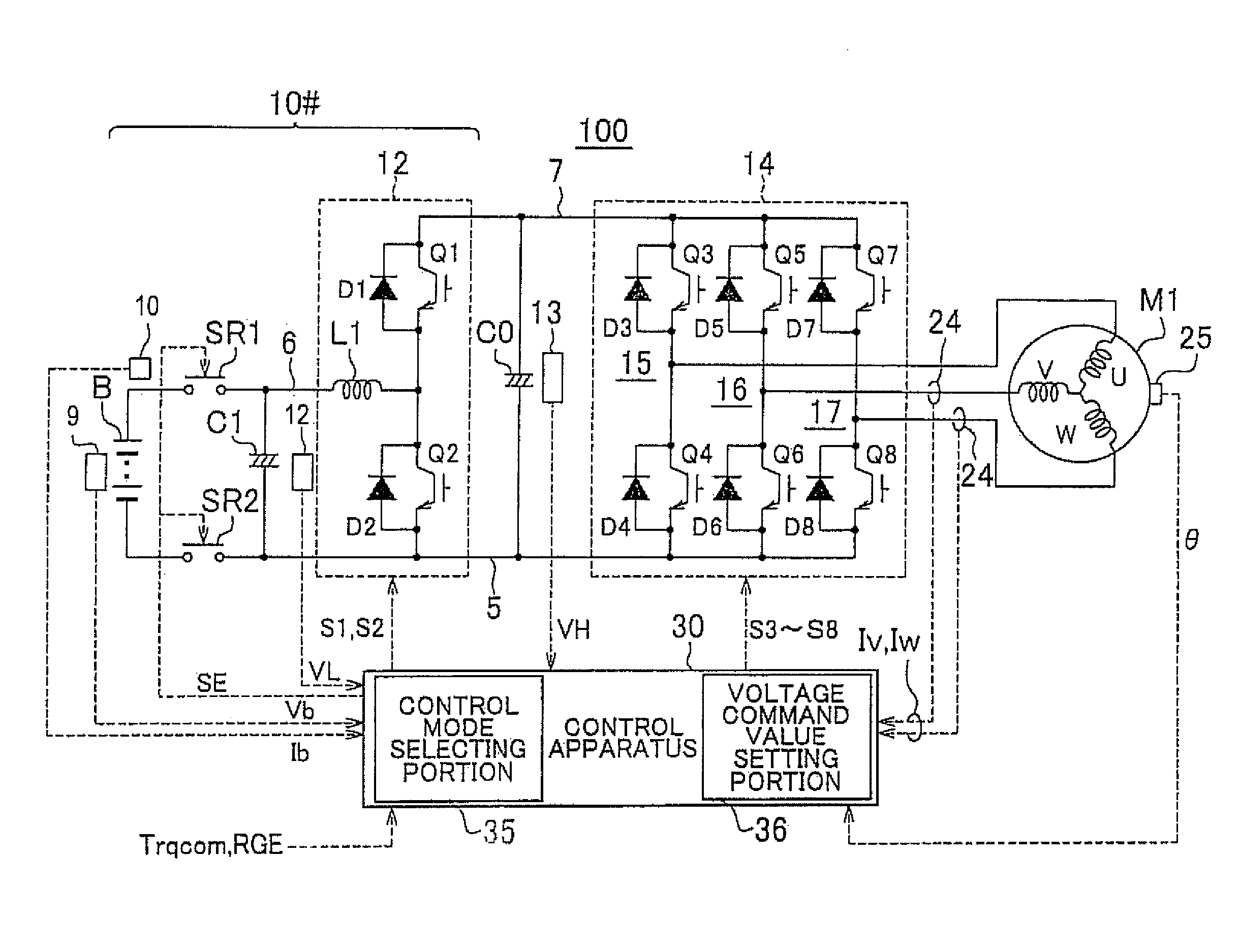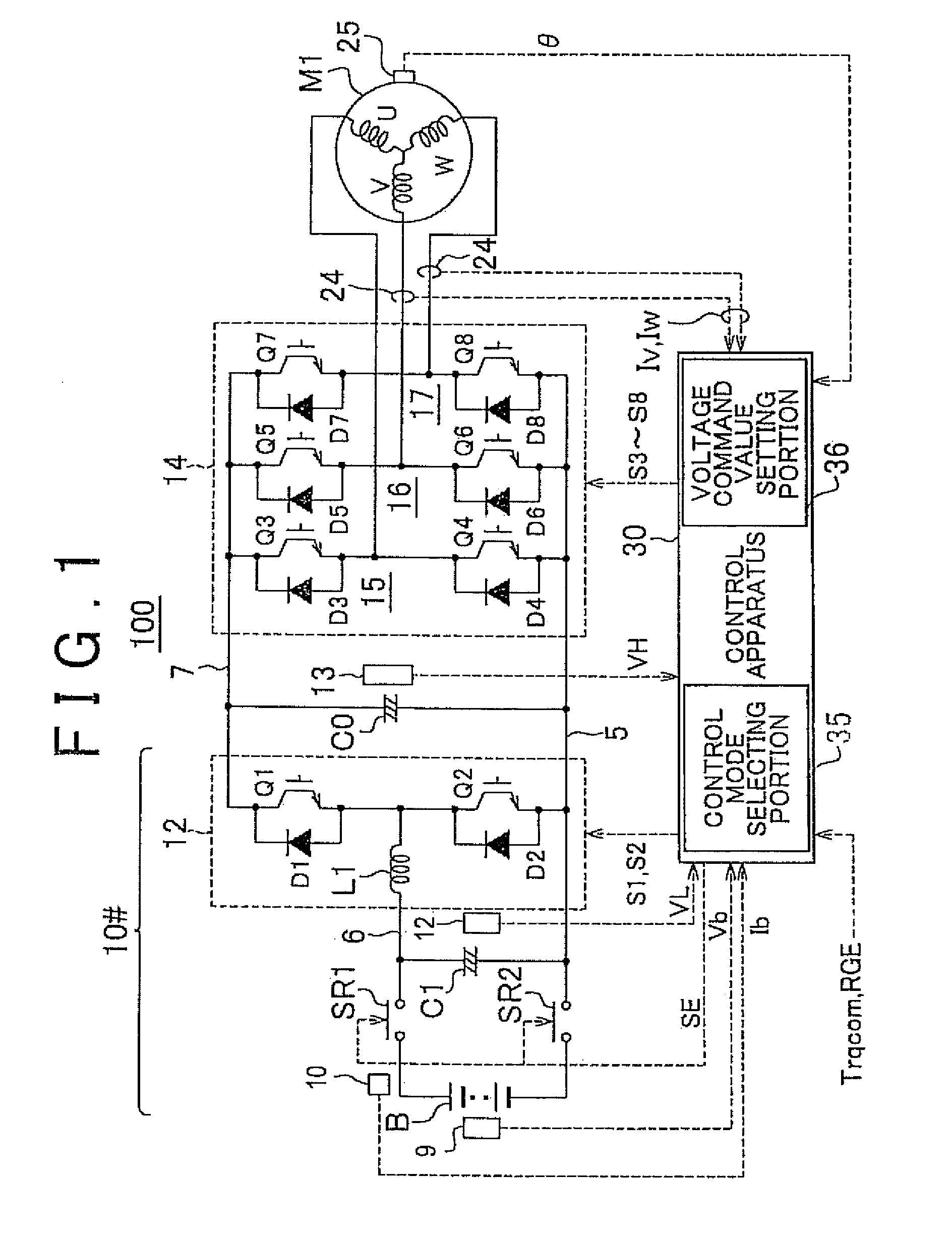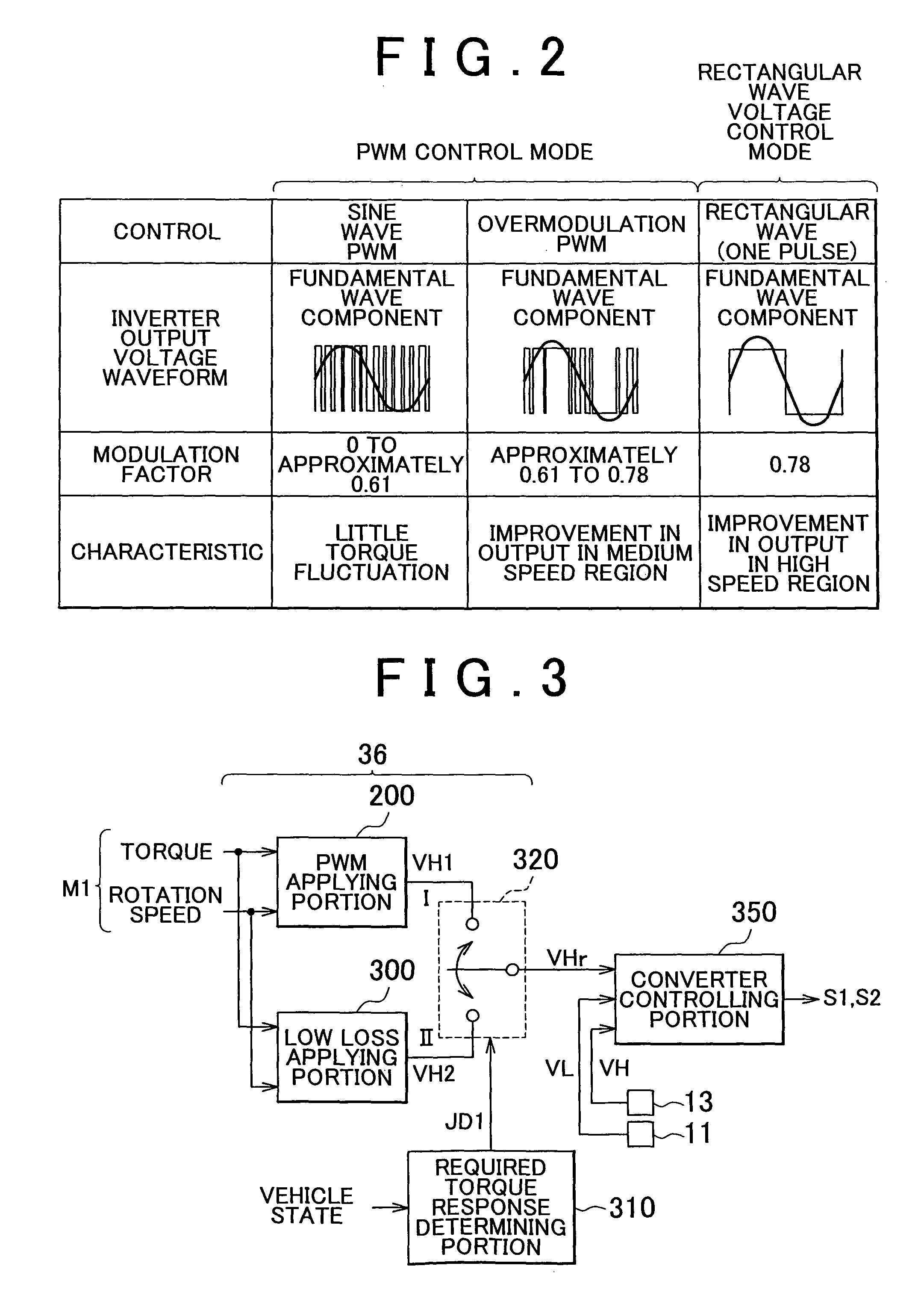Electric motor drive system for an electric vehicle
a technology of electric motors and electric motors, which is applied in the direction of propulsion by batteries/cells, process and machine control, instruments, etc., can solve the problems of reducing the drivability of the electric vehicle that is run by the output of the electric motor, determining the controllable output voltage of the converter, and reducing controllability. , to achieve the effect of ensuring the drivability of the electric vehicle, suppressing power loss, and improving fuel efficiency
- Summary
- Abstract
- Description
- Claims
- Application Information
AI Technical Summary
Benefits of technology
Problems solved by technology
Method used
Image
Examples
Embodiment Construction
[0035]An example embodiment of the present invention will be described in greater detail below with reference to the accompanying drawings. Incidentally, like or corresponding parts will be denoted by like reference characters and descriptions of those parts will generally not be repeated.
[0036](Overall structure of the electric motor control) FIG. 1 is a diagram of the overall structure of an electric motor drive system according to an example embodiment of the invention.
[0037]As shown in FIG. 1, the electric motor drive system 100 includes a direct-current voltage generating portion (hereinafter simply referred to as “DC voltage generating portion”) 10#, a smoothing capacitor C0, an inverter 14, an alternating-current electric motor (hereinafter simply referred to as “AC electric motor”) M1, and a control apparatus 30.
[0038]The AC electric motor M1 is a driving motor for generating torque used to drive driving wheels of a vehicle powered partially or entirely by electricity (i.e.,...
PUM
 Login to View More
Login to View More Abstract
Description
Claims
Application Information
 Login to View More
Login to View More - R&D
- Intellectual Property
- Life Sciences
- Materials
- Tech Scout
- Unparalleled Data Quality
- Higher Quality Content
- 60% Fewer Hallucinations
Browse by: Latest US Patents, China's latest patents, Technical Efficacy Thesaurus, Application Domain, Technology Topic, Popular Technical Reports.
© 2025 PatSnap. All rights reserved.Legal|Privacy policy|Modern Slavery Act Transparency Statement|Sitemap|About US| Contact US: help@patsnap.com



